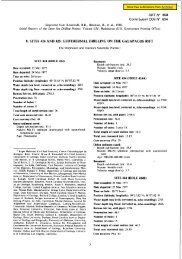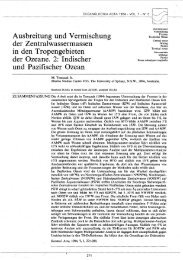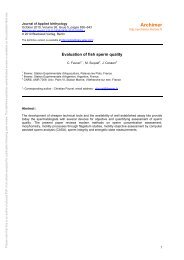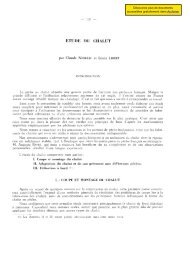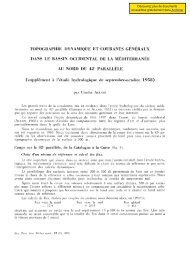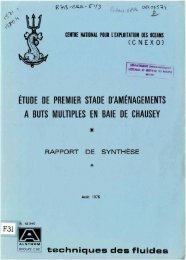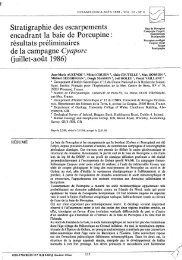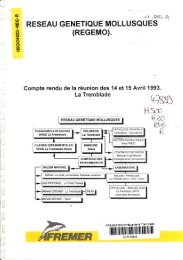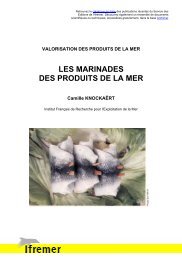Approche quantitative de la fonction de nourricerie jouée par les ...
Approche quantitative de la fonction de nourricerie jouée par les ...
Approche quantitative de la fonction de nourricerie jouée par les ...
You also want an ePaper? Increase the reach of your titles
YUMPU automatically turns print PDFs into web optimized ePapers that Google loves.
Chapitre 4 : Impact of vegetation structure dynamics and usage on the nursery function of<br />
West European tidal salt-marshes.<br />
stops its colonisation, so that sub-adults are absent. A re-colonisation by ol<strong>de</strong>r fish then<br />
occurs. In terms of predation, the marsh provi<strong>de</strong>s the young stages with physico-chemical<br />
protection because of the very strong constraints that any potential predators would face<br />
(salinity, temperature, dissolved oxygen, etc.). The ability of some species to withstand these<br />
conditions is a consi<strong>de</strong>rable evolutionary advantage. However, the shallowness and temporary<br />
nature of these habitats obliges the fish either to be of small size or have good swimming<br />
abilities, allowing them to actively swim out of the creeks before they dry out. The<br />
colonisation process used by Thinlip mullet enab<strong>les</strong> it to optimise the use of an unlimited food<br />
resource, the benthic micro-algae. Two hypotheses could therefore be proposed in terms of<br />
the frequentation of these marshes. Firstly, these food resources could allow the fish to build<br />
up energy reserves nee<strong>de</strong>d for reproduction (ovogenesis). Secondly, the return to these<br />
ecosystems after spawning in the sea could allow those fish exhausted by this stage in the life<br />
cycle to recover essential energy reserves. The species colonising the marsh for one or other<br />
of these purposes could be called Opportunistic salt marsh settlers. Here again the food<br />
resources support the whole popu<strong>la</strong>tion.<br />
Different kinds of salt marsh settlement and trophic utilization<br />
Salt marsh<br />
Salt marsh settlers species<br />
Young-of-the-year salt marsh settlers species<br />
They are present during the early stage up to one year at the most or acci<strong>de</strong>ntally during<br />
their second year (nursery <strong>fonction</strong> sensu stricto ).<br />
Juvenile salt marsh settlers species<br />
They are present at age 0 and 1, before sexual maturity.<br />
Opportunistic salt marsh settlers species<br />
They colonise the salt marsh at any age (facultative strategy).<br />
Resi<strong>de</strong>nt settlers species<br />
Feed there, but also use salt marshes as permanent habitats<br />
Marine<br />
Transient salt marsh Settlers species<br />
Stay for shrot moments during transit between<br />
riverine and marine systems<br />
Figure 30: Conceptual diagram of settlement behaviours and food resource use o European saltmarshes<br />
by different fish popu<strong>la</strong>tions.<br />
Figure 30 : Schéma conceptuel du comportement colonisateur et <strong>de</strong> l’utilisation <strong>de</strong>s marais sa<strong>les</strong><br />
européens <strong>par</strong> différentes popu<strong>la</strong>tions <strong>de</strong> poissons.<br />
141



